Introduction
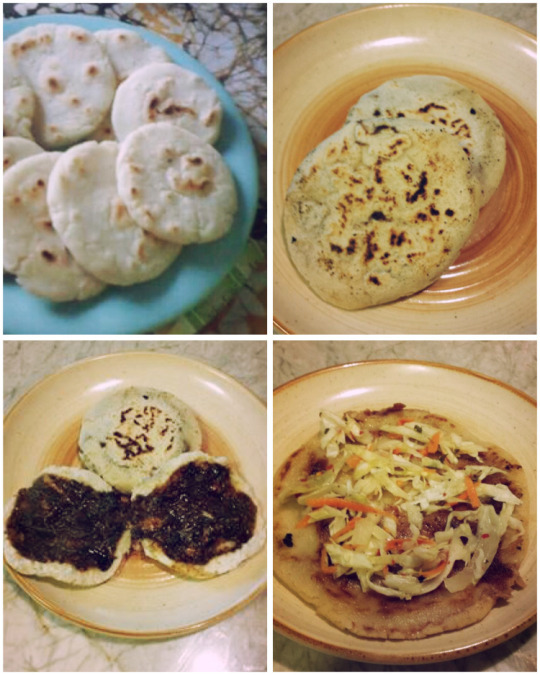
In the vibrant tapestry of Latin American cuisine, few dishes capture the essence of tradition and local flavors quite like pupusas and arepas. Originating from El Salvador and Venezuela, respectively, these two beloved dishes have become emblematic of their respective cultures. Both made from cornmeal dough, pupusas and arepas offer a delightful blend of textures and flavors that make them a favorite in Latin American households and beyond. This clash between pupusas and arepas will take us on a journey through their origins, preparation methods, fillings, and regional variations. Join us as we explore the battle of pupusas vs arepas.
Overview And History Of Pupusas And Arepas
Pupusas and Arepas have a rich history deeply rooted in the cultures of El Salvador and Venezuela, respectively. Pupusas can be traced back to the indigenous Pipil people of El Salvador, who first crafted these stuffed corn cakes centuries ago. They were traditionally made with maize, the staple crop of the region. On the other hand, Arepas can be traced back to the indigenous people of Venezuela, who also relied on maize as a primary food source. Over time, both dishes have evolved and incorporated new ingredients and flavors, becoming beloved and iconic staples of Latin American cuisine.
Key Ingredients And Culinary Origins
The key ingredients and culinary origins of Pupusas and Arepas are deeply rooted in the cultures of El Salvador and Venezuela, respectively. Pupusas are made with a dough of maize or cornmeal, which is then stuffed with a variety of fillings such as cheese, beans, and pork. Arepas, on the other hand, are made from corn flour and water, and can be filled with a wide range of ingredients like cheese, meats, beans, and eggs. These dishes have evolved over time, incorporating new flavors and ingredients, while still maintaining their traditional culinary origins.
Pupusas: Traditional Salvadoran Delicacy
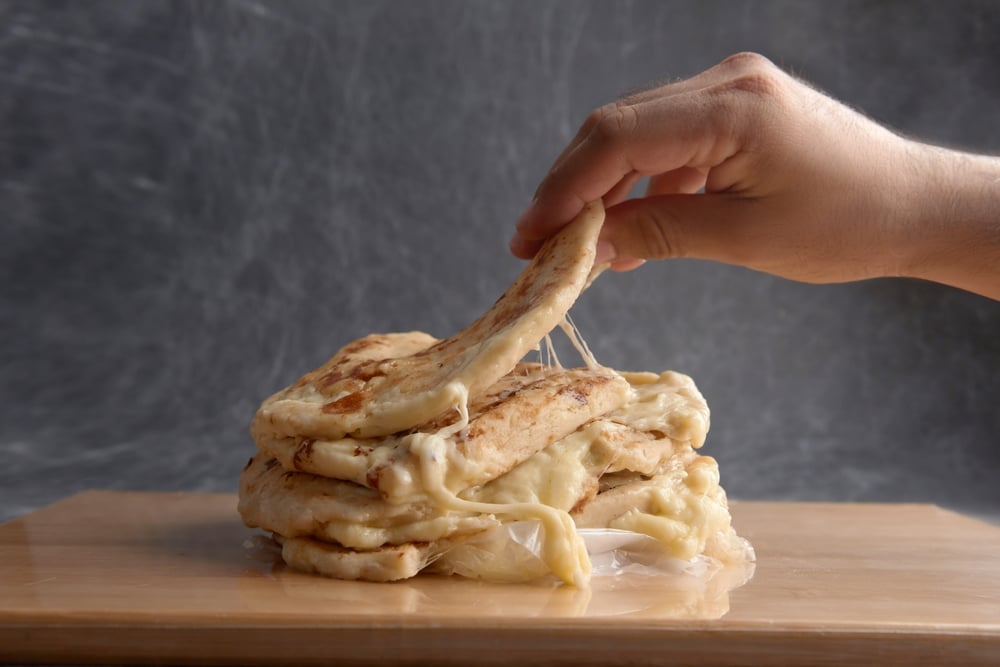
Pupusas, a beloved Salvadoran dish, are a traditional delicacy that showcases the rich culinary heritage of El Salvador. These thick, handmade corn tortillas are filled with a variety of delicious ingredients like cheese, beans, and pork. Pupusas are cooked on a griddle until they achieve a golden brown crust, resulting in a satisfying combination of textures – crispy on the outside and soft and gooey on the inside. They are often served with a refreshing side of curtido, a fermented cabbage slaw that adds a tangy and crunchy element to balance the flavors. Pupusas are a staple in Salvadoran cuisine and a must-try for any food enthusiast seeking an authentic taste of El Salvador’s culinary traditions.
Pupusas: Definition And Preparation
Pupusas are a traditional Salvadoran delicacy that consists of thick, handmade corn tortillas filled with various ingredients. The preparation of pupusas begins by mixing masa harina (corn flour) with water and salt to create a dough. The dough is then shaped into small balls and flattened into circular discs. The filling, which can include cheese, beans, or pork, is placed in the center of the disc, and the dough is folded over to enclose the filling. The pupusas are then cooked on a griddle until they develop a golden brown crust. This cooking process gives the pupusas a crispy exterior and a gooey, flavorful interior. Pupusas are typically served with a side of curtido, a tangy fermented cabbage slaw, and salsa.
Varieties Of Pupusas And Fillings
Pupusas offer a wide range of varieties when it comes to fillings. While the traditional pupusa is filled with cheese, beans, and pork, there are also numerous other delicious options to choose from. Some popular variations include pupusas filled with loroco, a tropical flower bud, or pupusas de revueltas, which combine cheese, beans, and pork. Vegetarian options like pupusas filled with cheese and beans are also available. These different fillings add unique flavors and textures to the pupusas, allowing everyone to find their favorite combination.
Arepas: Iconic Venezuelan And Colombian Dish
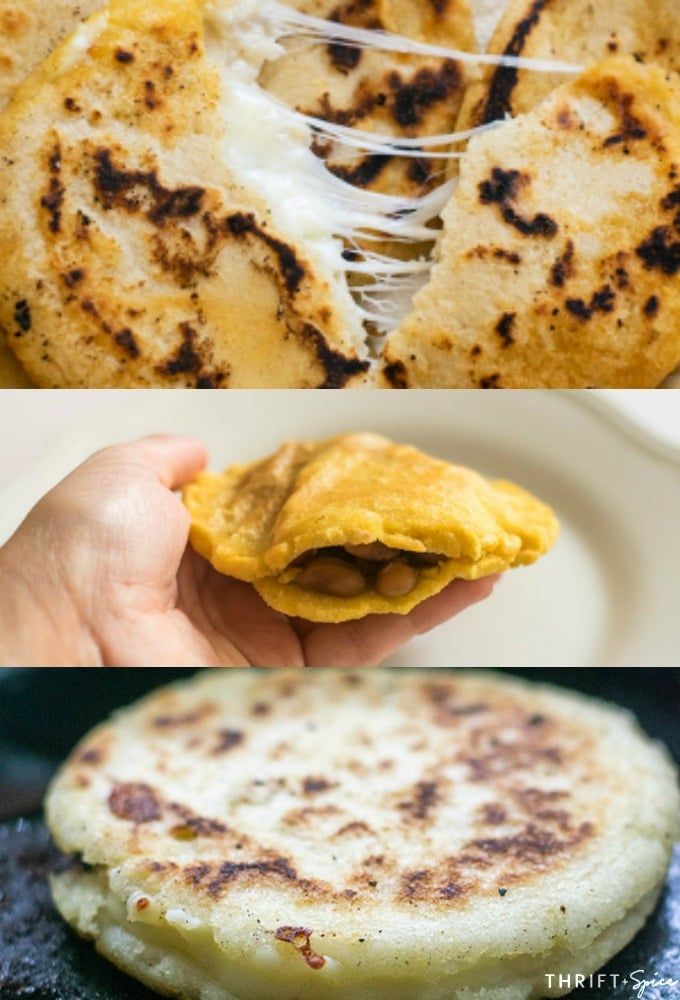
Arepas are an iconic dish in both Venezuelan and Colombian cuisine. These round, flatbreads are made from maize or corn dough and are a staple in both countries. Arepas are typically grilled or fried and can be enjoyed as a main dish or as a versatile snack. They are known for their thick and crispy exterior and soft, doughy interior. Arepas are often split open and filled with a variety of ingredients, such as meat, cheese, avocados, beans, or eggs, making them a delicious and satisfying meal option.
Arepas: Definition And Preparation
Arepas are round, flatbreads made from maize or corn dough that are a beloved staple in Venezuelan and Colombian cuisine. To prepare arepas, a mixture of corn flour, water, and salt is formed into a dough, which is then shaped into patties or discs. These patties are then cooked either by grilling or frying until they develop a crispy and golden brown exterior. The interior of the arepas remains soft and doughy, providing a contrast in texture. Once cooked, arepas can be split open and filled with a variety of ingredients, such as cheese, meat, avocados, beans, or eggs, allowing for endless culinary creativity.
Varieties Of Arepas And Fillings
There are various types of arepas known for their different shapes and fillings. Some popular varieties include:
- Arepa de Queso: This is a classic arepa filled with melted cheese. It is simple yet delicious.
- Arepa Reina Pepiada: This is a Venezuelan favorite, filled with a combination of shredded chicken, ripe avocado, and mayonnaise.
- Arepa Dominó: This arepa gets its name from its black and white filling, which consists of black beans and white cheese.
- Arepa Pabellón: This iconic Venezuelan arepa is filled with shredded beef, black beans, sweet plantains, and white cheese.
- Arepa con Perico: Popular in Colombia, this arepa is stuffed with scrambled eggs mixed with tomatoes, onions, and sometimes cilantro.
The versatility of arepas allows for endless filling possibilities, catering to different tastes and preferences. From savory meats and cheese to vegetarian-friendly options, there is an arepa filling to suit every palate.
Pupusas Vs. Arepas: Similarities And Differences
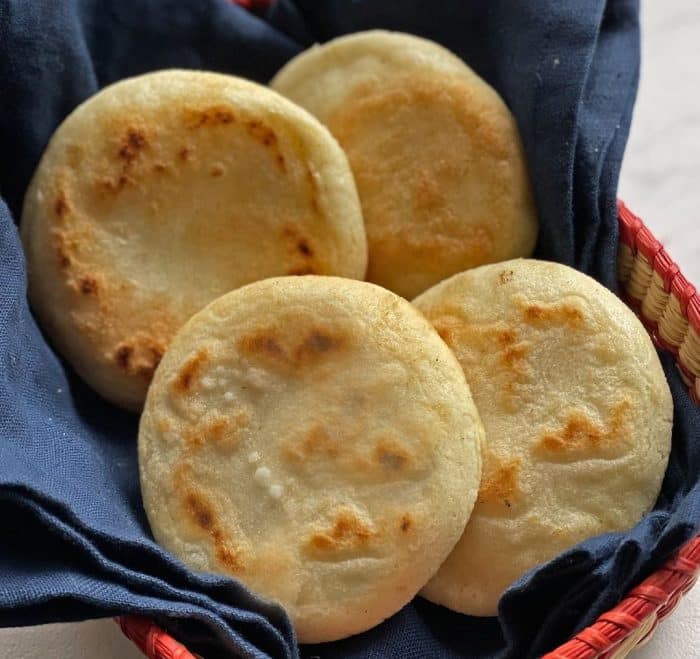
When it comes to comparing Pupusas and Arepas, there are both similarities and differences to consider.
Texture And Flavor Comparison:
Pupusas and Arepas share a common base of corn flour, resulting in a similar texture that is crispy on the outside and doughy on the inside. However, Pupusas are typically thicker and have a soft, chewy consistency, while Arepas are thinner and have a crispier shell. In terms of flavor, Pupusas often have a tangy and slightly sour taste, while Arepas have a milder and more neutral flavor.
Regional Variations And Cultural Significance:
Pupusas are most commonly associated with El Salvador, where they are considered a national dish. They play an integral part in Salvadoran cuisine and are a symbol of the country’s culinary identity. Arepas, on the other hand, are prevalent in both Venezuela and Colombia, with regional variations in terms of fillings and preparations.
In summary, while Pupusas and Arepas share similarities in terms of their corn-based dough, they differ in texture, flavor, and cultural significance. Both dishes have a beloved place in Latin cuisine, offering unique culinary experiences that are worth exploring.
Texture And Flavor Comparison
Pupusas and Arepas have distinct textures and flavors that set them apart. Pupusas are known for their thick and chewy consistency, with a crispy outer layer that adds a delightful contrast. The corn-based dough gives them a tangy and slightly sour taste, thanks to the fermentation process. On the other hand, Arepas have a thinner and crispier shell, offering a lighter texture. Their flavor is more neutral and milder compared to Pupusas, allowing the fillings to take center stage. These differences in texture and flavor contribute to the unique dining experience each dish provides.
Regional Variations And Cultural Significance
Pupusas and Arepas have regional variations that reflect the diverse culinary traditions of Latin America. In El Salvador, pupusas may come in various forms, such as revueltas (with cheese, beans, and pork), queso con loroco (with cheese and edible flower buds), or vegetarian options. In Colombia and Venezuela, arepas can be filled with an array of ingredients like shredded beef, chicken, cheese, avocado, or various traditional sauces. Both dishes hold cultural significance as they represent the culinary heritage and national pride of their respective countries. Whether enjoyed as street food or in family gatherings, pupusas and arepas play an integral role in Latin American cuisine.
Popular Toppings And Condiments
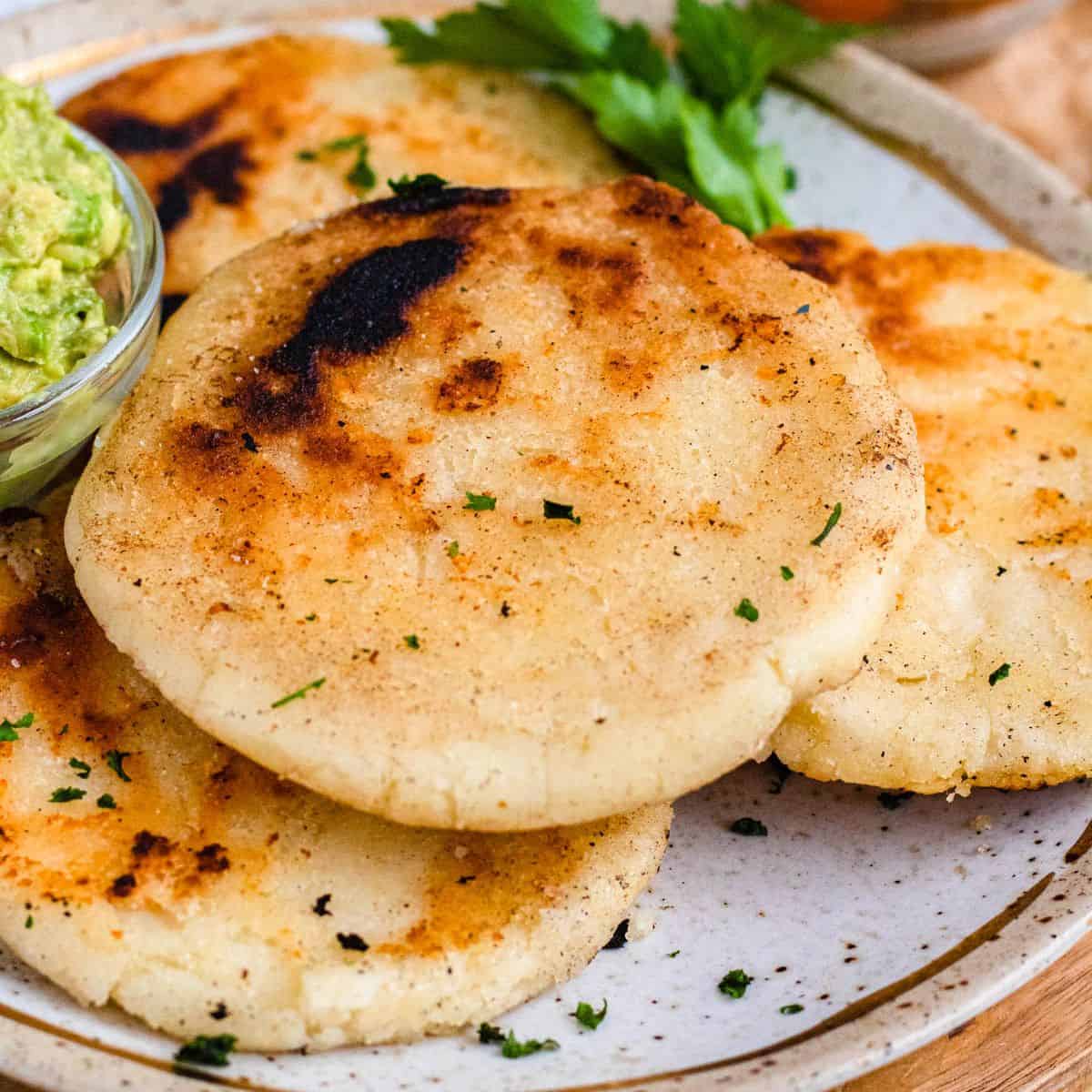
Popular Toppings and Condiments enhance the flavors of both Pupusas and Arepas, taking them to the next level of deliciousness. For Pupusas, traditional accompaniments include curtido, a tangy cabbage slaw, and salsa roja, a spicy tomato sauce. Other popular options include pickled vegetables, avocado slices, and crema, a creamy sauce. Arepas can be topped with a variety of fillings such as shredded beef, chicken, or cheese, and served with guasacaca, a Venezuelan avocado sauce, or ají, a Colombian spicy sauce. These toppings and condiments add extra layers of taste and texture, making each bite even more enjoyable.
Traditional Accompaniments For Pupusas
Traditional accompaniments for Pupusas include curtido and salsa roja. Curtido is a fermented cabbage slaw that adds a tangy and crunchy texture to the Pupusas. This traditional Salvadoran condiment is made by pickling shredded cabbage and carrots in vinegar and seasoned with oregano. Salsa roja, on the other hand, is a spicy tomato sauce that complements the flavors of the Pupusas. It is made by blending tomatoes, onions, garlic, and chili peppers, and can be adjusted according to personal spice preferences. These accompaniments enhance the taste and provide a balanced flavor profile to the Pupusas.
Recommended Toppings And Fillings For Arepas
When it comes to toppings and fillings for Arepas, the possibilities are endless. Some popular options include:
- Reina Pepiada: This traditional filling combines shredded chicken, avocado, mayonnaise, and cilantro.
- Dominó: A classic combination of black beans and white cheese.
- Pabellón: Inspired by Venezuela’s national dish, this filling consists of shredded beef, black beans, sweet plantains, and cheese.
- Queso de Mano: A simple yet delicious filling of salty cheese.
- Perico: Scrambled eggs with tomatoes, onions, and peppers.
These fillings can be complemented with various toppings such as avocado slices, hot sauce, and sour cream, adding even more flavor to your Arepas.
Conclusion
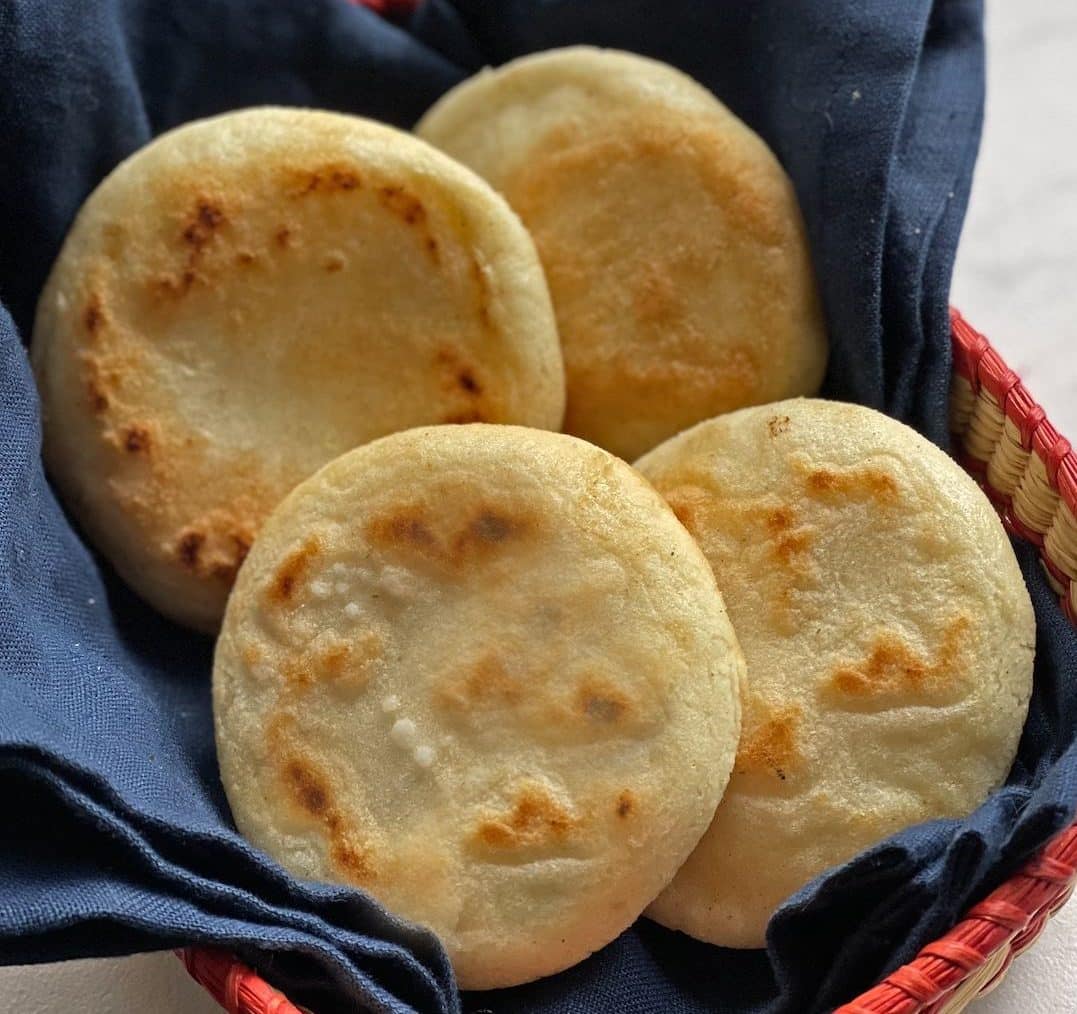
After this delightful culinary exploration, it is clear that both Pupusas and Arepas hold a special place in Latin cuisine. Pupusas, with their thick and soft corn dough filled with flavorful ingredients, bring a taste of El Salvador to the table. Arepas, on the other hand, offer a crispy and versatile option with various fillings that represent the rich flavors of Venezuela and Colombia. Both dishes have their unique characteristics and regional variations, making them beloved by locals and food lovers worldwide. Whether you prefer Pupusas or Arepas, you’re sure to enjoy the delicious flavors and cultural heritage these Latin American delicacies bring.
Which Is The Winner: Pupusas Or Arepas?
When it comes to deciding which dish is the winner between Pupusas and Arepas, it ultimately comes down to personal preference. Both Pupusas and Arepas have their unique characteristics and flavors that make them beloved in Latin cuisine. Pupusas offer a thick and soft corn dough filled with delicious ingredients, while Arepas provide a crispy and versatile option with various fillings. Whether you prefer the comforting and savory taste of Pupusas or the crunchy and diverse flavors of Arepas, both dishes are winners in their own right, showcasing the rich culinary heritage of Latin America.
Relevance And Popularity Of Both Dishes In Latin Cuisine
Both Pupusas and Arepas hold great relevance and popularity in Latin cuisine. Pupusas are considered a national dish in El Salvador and are widely enjoyed throughout Central America. They represent a culinary tradition that has been passed down through generations. Similarly, Arepas are a staple in Venezuelan and Colombian cuisine, where they are enjoyed as a versatile and delicious meal option. Their popularity has spread beyond their countries of origin and can now be found in various Latin American restaurants around the world, showcasing the widespread appeal of these delectable dishes.
FAQ – Pupusas vs Arepas
Q: What are pupusas and arepas?
A: Pupusas and arepas are both popular traditional dishes in Central and South America. Pupusas originate from El Salvador, while arepas are commonly associated with Colombia and Venezuela.
Q: How are pupusas and arepas different?
A: Pupusas are thick stuffed corn tortillas typically filled with a variety of ingredients such as cheese, beans, meat, or vegetables. Arepas, on the other hand, are flat round bread made from ground maize dough and can also be filled with a variety of ingredients.
Q: What is the main ingredient in pupusas and arepas?
A: The main ingredient in pupusas is masa harina, a type of corn flour. Arepas are also made from ground maize dough, which is a type of cornmeal.
Q: How are pupusas and arepas cooked?
A: Pupusas are traditionally cooked on a hot griddle or comal until they are golden brown and crispy on the outside, while the inside remains soft and gooey with the melted filling. Arepas are usually cooked on a griddle or fried until they develop a crispy crust on the outside.
Q: What are the common fillings for pupusas and arepas?
A: Popular pupusa fillings include cheese (queso), beans (frijoles), chicharrón (pork cracklings), and loroco (a type of edible flower bud). Arepas can be filled with a variety of ingredients such as cheese, shredded meat, avocado, chicken, black beans, and more.
Q: Which country has the best pupusas and arepas?
A: The taste and preference for pupusas and arepas may vary from person to person. It’s best to try them from various sources, including authentic restaurants or home-cooked versions, to determine your personal favorite.
Q: Can pupusas and arepas be gluten-free?
A: Yes, pupusas and arepas can be made gluten-free since the main ingredient, corn flour, does not contain gluten. However, it’s important to check the ingredients or ask the cook to ensure no gluten-based fillings or toppings are added.
Q: How should pupusas and arepas be served?
A: Pupusas are traditionally served with tomato sauce or salsa, curtido (fermented cabbage slaw), and sometimes topped with crema or sour cream. Arepas can be served with various fillings and toppings, such as avocado, shredded beef, or cheese.
Q: Are pupusas and arepas considered street food?
A: Yes, both pupusas and arepas are commonly found as street food in their respective countries of origin and have gained popularity worldwide. However, they can also be found in restaurants and home kitchens.
Q: Can I make pupusas and arepas at home?
A: Absolutely! There are many recipes available online that guide you through the process of making pupusas and arepas from scratch. With the right ingredients and a bit of practice, you can enjoy these delicious dishes in the comfort of your own home.
Q: Can I enjoy both pupusas and arepas together?
A: While they are distinct dishes from different countries, there’s no rule against enjoying both pupusas and arepas together. Each has its own unique flavors, fillings, and textures, making them excellent choices for a diverse culinary experience.

Kemah Cafe is a family-owned eatery that takes pride in offering a delightful array of Vietnamese, Chinese, and Thai dishes. Located at the heart of the community, Kemah Cafe has been serving up delicious Pho and other authentic Asian cuisine for many years. Founded with a passion for sharing the flavors of the East, Kemah Cafe has become a beloved culinary destination for locals and visitors alike. The warm and welcoming atmosphere of the cafe, combined with the tantalizing aromas of freshly prepared dishes, creates an unforgettable dining experience.